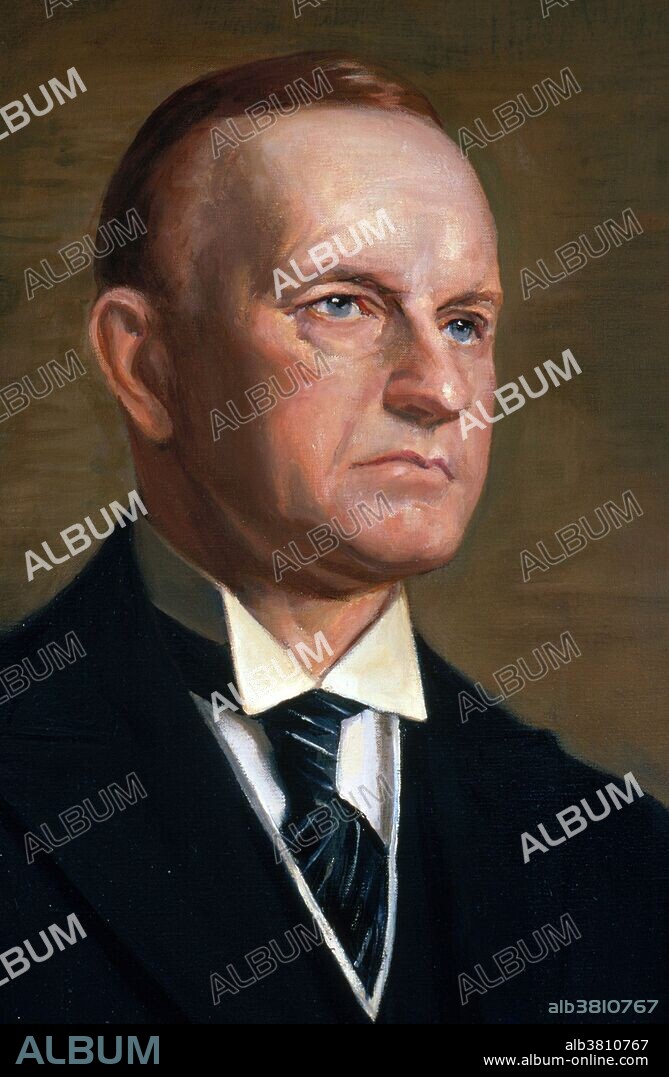alb3810767
Calvin Coolidge, 30th U. S. President

|
Ajouter à une autre Lightbox |
|
Ajouter à une autre Lightbox |



Avez-vous déjà un compte? S'identifier
Vous n'avez pas de compte ? S'inscrire
Acheter cette image
Titre:
Calvin Coolidge, 30th U. S. President
Légende:
Voir la traduction automatique
Coolidge portrait painted by Joseph Burgess. John Calvin Coolidge, Jr. (July 4, 1872 - January 5, 1933) was the 30th President of the United States (1923-1929). A Republican lawyer from Vermont, Coolidge worked his way up the ladder of Massachusetts state politics, eventually becoming governor of that state. His response to the Boston Police Strike of 1919 thrust him into the national spotlight and gave him a reputation as a man of decisive action. Soon after, he was elected as the 29th Vice President in 1920 and succeeded to the Presidency upon the sudden death of Warren G. Harding in 1923. Elected in his own right in 1924, he gained a reputation as a small-government conservative, and also as a man who said very little. Coolidge restored public confidence in the White House after the scandals of his predecessor's administration, and left office with considerable popularity. Some later criticized Coolidge as part of a general disapproval of laissez-faire government. His reputation underwent a renaissance during the Ronald Reagan administration, but the ultimate assessment of his presidency is still divided between those who approve of his reduction of the size of government programs and those who believe the federal government should be more involved in regulating and controlling the economy. He died suddenly from coronary thrombosis in 1933 at the age of 60. Shortly before his death, Coolidge confided to an old friend: "I feel I no longer fit in with these times."
Crédit:
Album / Science Source / Photo Researchers
Autorisations:
Modèle: Non - Propriété: Non
Questions sur les droits?
Questions sur les droits?
Taille de l'image:
2360 x 3612 px | 24.4 MB
Taille d'impression:
20.0 x 30.6 cm | 7.9 x 12.0 in (300 dpi)
Mots clés:
AMÉRICAIN • CÉLÈBRE • CELEBRITE • HOMME • PERSONNAGES • PERSONNALITÉS • PERSONNE • PORTAIT • PORTRAIT • POTRAIT • REPUBLICAIN • VICE-PRESIDENT • XXE SIECLE
 Pinterest
Pinterest Twitter
Twitter Facebook
Facebook Copier le lien
Copier le lien Email
Email
